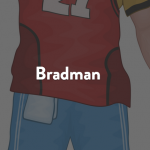February 8, 2012
Matthew Braga
The Guardian’s latest hack day projects hope to improve journalism (and football)
It’s easy to forget that newspapers aren’t all words and type—there are, in fact, large armies of software developers and engineers working behind the scenes to develop the mobile apps and websites you see online. Take The Guardian, for instance, which has over 40 employees on its software team alone.
Every once in a while, The Guardian turns its collective brainpower to experimental tasks—so-called “hack days” that provide a reprieve from everyday routine. The purpose of a hack day is to prototype new methods of interpreting and displaying the vast amounts of data published on The Guardian‘s website. At other papers, such as The New York Times, some of these hacks have actually become full-fledged features or products, such as the newspaper’s impressive HTML5 newsreader.
Last week’s hack day had 25 projects registered to be presented—and many involved football (or soccer, if you will). One developer analyzed
The Guardian‘s football match predictions from previous seasons and compared them with the actual results, in the hopes of making more accurate forecasts in the future. In another demo, a developer presented a feature called “Annotate This,” which would allow readers to annotate the minute-by-minute liveblogs of football games.
In fact, sports-related hacks dominated much of The Guardian‘s hack day, with one developer suggesting a “second-screen” concept in which a tablet could be used to display related Guardian content during a football match. Another presented a schedule containing each of the London Summer Olympic’s 650 events, colour-coded by gender with the aim of being easier to read.
That’s not to say there weren’t hacks related to traditional journalism, and the way in which those stories are presented on the site. From The Guardian‘s liveblog of the day:
“Jenny Sivapalan and Sheena Luu are personalising Guardian content for you. You can like individual tags that are applied to stories and appear next to the image in an article (this one, for example, is tagged with things like software and programming), and next time you come back to the site a small component shows the latest content that matches those tags that you’ve liked. They picked ‘Wildlife’ as one of the tags, so now we’ve had our first sheep on screen.”
In another instance, a developer by the name of Martin Belam used The Guardian‘s tag system to collect long-form stories together in a simple, streamlined hub to make for easy, clutter-free reading.
Unfortunately, the liveblog account of the event was largely textual, and links to actual working demos were slim. However, the top ideas will be debated next week, with some of the best being assigned product managers and perhaps even end up as full-fledged projects—similar to
The New York Times‘s beta group that
we covered last week.
Lead image via Flickr user
Tom T.
by Matthew Braga
Matthew Braga was the Senior Online Editor of the Summer 2012 issue of the Ryerson Review of Journalism.














